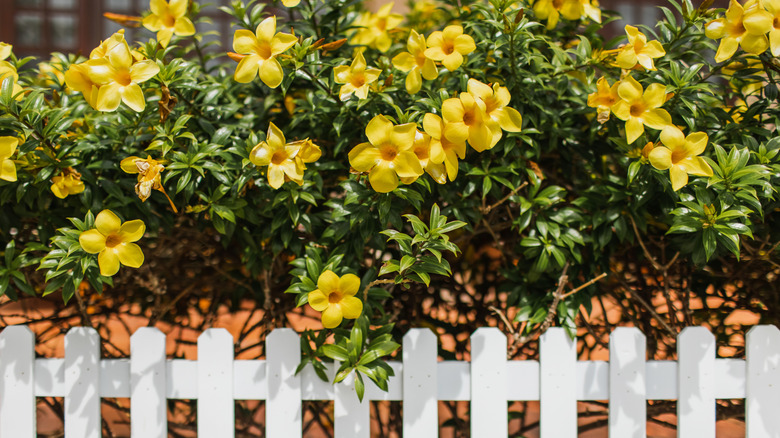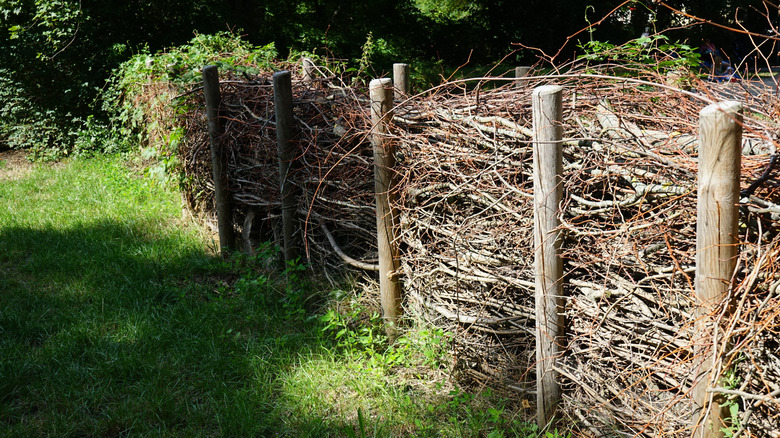The Budget-Friendly Fence Alternative Using Items Already In Your Yard
Adding a fence to your garden or yard can do wonders for your outdoor space. It creates a sense of privacy, helps define boundaries, and can even protect your plants from pets or wildlife. Not to mention, a well-placed fence adds a polished, intentional look to your landscape. However, fencing can be expensive, with costs ranging anywhere between $1,800 to nearly $5,000, depending on the materials and size. The good news is you don't have to spend a cent if you're willing to get a little creative. One simple, eco-friendly option is to build your own fence using a method called dead hedging.
Dead hedge fencing is a natural barrier made entirely from fallen branches, twigs, and pruned yard clippings – items you probably already have lying around your garden. Not only is it free, but it also blends beautifully into the landscape, supports wildlife such as birds and insects, and helps recycle organic material you'd otherwise toss or burn. It's a smart way to improve your lawn without spending a dime as it's practical and totally DIY-friendly.
How to build a dead hedge fence in your yard
To transform your garden waste into a rustic fence by giving dead branches new life, start by determining a location for the fencing and mark it out with string. Then, you will need to drive a pair of upright stakes into the ground to form the base. You will need to leave enough space between the stakes (or posts) to put in your materials. Next, stack and weave your collected sticks, prunings, and woody trimmings between the stakes. Continue layering the materials until the hedge reaches the desired height. Repeat the process for the length of your fence line, setting more stakes at equal distances. Once the fence is up, you don't have to stop there. You can keep adding to the pile as you come across more yard or garden scraps.
Maintenance would be one of the downsides you should know about before building a fence around your garden, but you will not have to worry about that too much with dead hedge fencing. Other than the occasional top-up, dead hedges do not need the upkeep traditional fences do (think irrigating, pruning, and fertilizing living hedges or waterproofing commercial fences). This makes them the perfect, no-hassle solution for nature-loving homeowners looking to save a few bucks.

